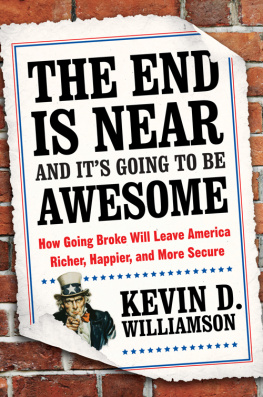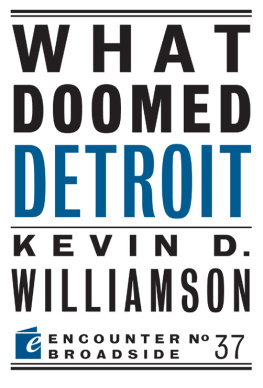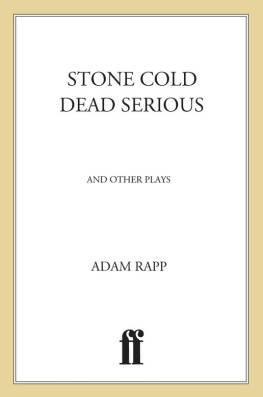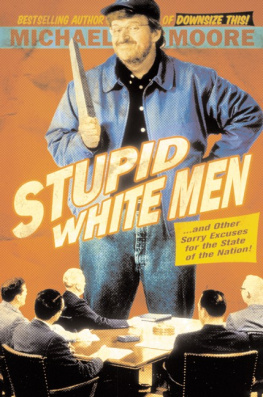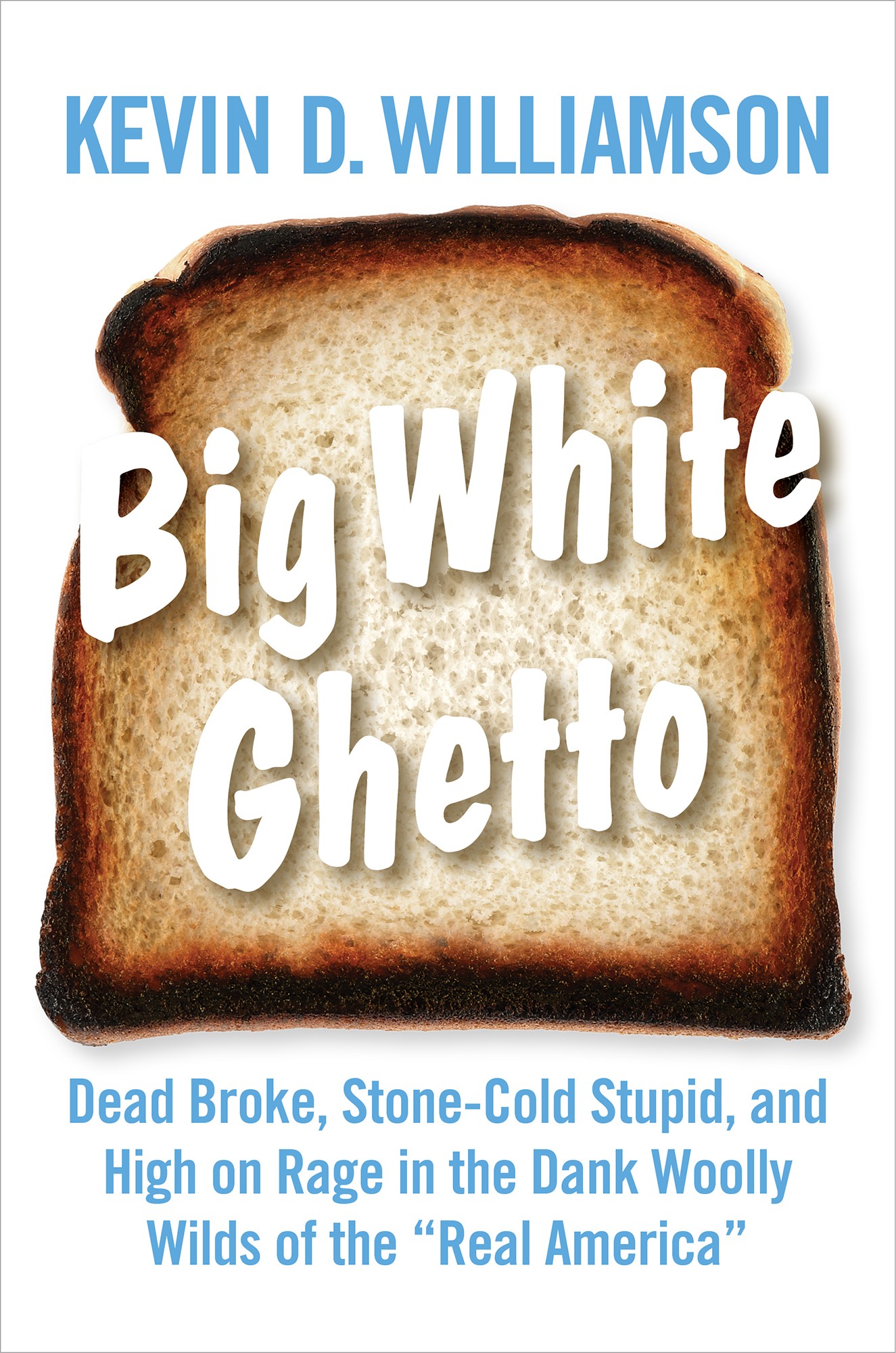Contents
Guide
Copyright 2020 by Kevin D. Williamson
Materials previously published by National Review reprinted by permission. Original titles and years of publication listed on page 221. Essays have been lightly edited.
All rights reserved. No part of this publication may be reproduced or transmitted in any form or by any means electronic or mechanical, including photocopy, recording, or any information storage and retrieval system now known or to be invented, without permission in writing from the publisher, except by a reviewer who wishes to quote brief passages in connection with a review written for inclusion in a magazine, newspaper, website, or broadcast.
Regnery is a registered trademark of Salem Communications Holding Corporation
ISBN 978-1-62157-969-4
eISBN 978-1-62157-994-6
Library of Congress Control Number: 2020939343
Published in the United States by
Regnery Publishing
A Division of Salem Media Group
300 New Jersey Ave NW
Washington, DC 20001
www.Regnery.com
Cover design by John Caruso
Books are available in quantity for promotional or premium use. For information on discounts and terms, please visit our website: www.Regnery.com.
For Jay Nordlinger, il miglior fabbro.
Big White Ghetto
Owsley County, Kentucky
T HERE ARE LOTS OF DIVERSIONS IN THE B IG W HITE G HETTO , the vast moribund matrix of Wonder Breadhued Appalachian towns and villages stretching from northern Mississippi to southern New York. Its a slowly dissipating nebula of poverty and misery with its heart in eastern Kentucky, the last redoubt of the Scots-Irish working class that picked up where African slave labor left off, mining and cropping and sawing the raw materials for a modern American economy that would soon run out of profitable uses for the class of people who five hundred years ago would have been known, without any derogation intended, as peasants. Thinking about the future here, with its bleak prospects, is not much fun at all. So instead of too much black-minded introspection you have the pills and the dope, the morning beers, the endless scratch-off lotto cards, the healing meetings up on the hill, the federally funded ritual of trading cases of food-stamp Pepsi for packs of Kentuckys Best cigarettes and good old hard currency, tall piles of gas-station nachos, the occasional blast of meth, Narcotics Anonymous meetings, petty crime, T HE D RAW , the recreational making and surgical unmaking of teenaged mothers, and death: Life expectancies are short; the typical man here dies well over a decade earlier than a man in Fairfax County, Virginia. And they are getting shorter, womens life expectancy having declined by nearly 1.1 percent from 1987 to 2007.
If the people here werent 98.5 percent white, wed call it a reservation.
Driving through these hills and hollows, you arent in the Appalachia of Elmore Leonards Justified or squatting with Lyndon Johnson on Tom Fletchers front porch in Martin County, a scene famously photographed by Walter Bennett of Time, the image that launched the so-called War on Poverty. The music isnt Shady Grove, its thumpa-thumpa-thumpa Kanye West. There is still coal miningwhich, at twenty-five dollars an hour or more, is one of the more desirable occupations outside of government work. But the jobs are moving west, and Harlan County, the heart of coal country, has lost nearly half of its population over the past thirty years.
There is here a strain of fervid and sometimes apocalyptic Christianity. Visions of the Rapture must have a certain appeal for people who already have been left behind. Like its black urban counterparts, the Big White Ghetto suffers from a whole trainload of social problems, but the most significant among them may be adverse selection: Those who have the required work skills, the academic ability, or the simple desperate native enterprising grit to do so get the hell out as fast as they can, and they have been doing that for decades. As they go businesses disappear, institutions fall into decline, social networks erode, and there is little or nothing left over for those who remain. Its a classic economic death spiral: The quality of the available jobs is not enough to keep good workers, and the quality of the available workers is not enough to attract good jobs. These little towns located at remote wide spots in helical mountain roads are hard enough to get to if you have a good reason to be here. If you dont have a good reason, you arent going to think of one.
Appalachian places have evocative and unsentimental names denoting deep roots: Little Barren River, Coal Pit Road. The name Cumberland blankets Appalachian geographythe Cumberland Mountains, the Cumberland River, several Cumberland countiesin tribute to the Duke of Cumberland, who along with the Ulster Scots ancestors of the Appalachian settlers crushed the Young Pretender at the Battle of Culloden. Even church names suggest ancient grievances: S EPARATE Baptist, with the descriptor in all-capital letters. (Come out from among them and be ye separate [2 Corinthians 6:17].) I pass a church called Welfare Baptist, which, unfortunately, describes much of the population for miles and miles around.
T HERE IS NOT MUCH NOVELTY IN B OONEVILLE , K ENTUCKY, the seat of Owsley County, but it does receive a steady trickle of visitors: Its public figures suffer politely through a perverse brand of tourism from journalists and do-gooders every time the U.S. Census data are recalculated and it defends its dubious title as poorest county in these United States. The first person I encounter is JimmyI think hes called Jimmy; there is so much alcohol and Kentucky in his voice that I have a hard time understanding himwho is hanging out by the steps of the local municipal building waiting for something to happen, and what happens today is me. Unprompted, he breaks away from the little knot of men he is standing with and comes at me smiling hard. He appears to be one of those committed dipsomaniacs of the sort David Foster Wallace had in mind when he observed that at a certain point in a drunks career it does not matter all that much whether hes actually been drinking, thats just the way he is. Jimmy is attached to one of the clusters of unbusy men who lounge in front of the public buildings in Boonevilleold-timers with nothing to do, one observer calls them, though some of those old-timers do not appear to have reached thirty yet, and while their Mossy Oak camouflage outfits say Remington, their complexions say Nintendo. Mossy Oak and Realtree camo are aesthetic touchstones in these parts: I spot a new $50,000 Ram pickup truck with an exterior as shiny as a silver ingot and a camouflage interior, the utility of which is not obvious.
I expect Jimmy to ask for money, but instead he launches into a long disquisition about something called the Thread the Needle program, relating with great animation how he convinced a lady acquaintance of his to go down to the county building and offer to sign up for Thread the Needle, telling her that she would receive twenty-five or fifty dollars for doing so.
T HREAD THE N EEDLE ! I TOLD HER , he says. R IGHT ? R IGHT ? He pantomimes threading a needle. He laughs. I dont quite get it. So he tells the story again in what I assume are more or less the exact same slurred words. R IGHT ?
Right
But they aint no Thread the Needle program! I play pranks!


